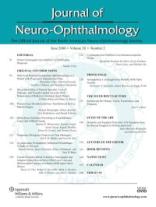| Title |
Journal of Neuro-Ophthalmology, June 2009, Volume 28, Issue 2 |
| Date |
2009-06 |
| Language |
eng |
| Format |
application/pdf |
| Type |
Text |
| Publication Type |
Journal Article |
| Collection |
Neuro-Ophthalmology Virtual Education Library: Journal of Neuro-Ophthalmology Archives: https://novel.utah.edu/jno/ |
| Publisher |
Lippincott, Williams & Wilkins |
| Holding Institution |
Spencer S. Eccles Health Sciences Library, University of Utah |
| Rights Management |
© North American Neuro-Ophthalmology Society |
| ARK |
ark:/87278/s6r246hr |
| Setname |
ehsl_novel_jno |
| ID |
225697 |
| Reference URL |
https://collections.lib.utah.edu/ark:/87278/s6r246hr |



















